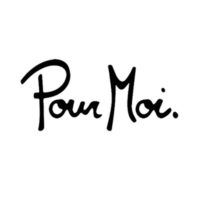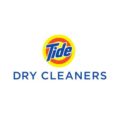Pour Moi Joins DTCs Selling on Amazon; Cargo Expands Uber Partnership
by Hugh Williams on 14th Mar 2019 in News


DTC’s Daily Digest brings you the latest news on the world’s fastest growing direct-to-consumer brands. In today’s edition: Pour Moi joins DTCs selling on Amazon; Cargo expands Uber partnership; and Monzo beats First Direct as best bank.
Pour Moi joins DTCs selling on Amazon
Pour Moi, the D2C skincare brand based on regional climates, says it is joining the many indie beauty products selling on Amazon.
Pour Moi targets a line of products (e.g. day and night creams, balancers, and serums) to where women live. Recommendations are adjusted seasonally, too, to make sure women get the right level of environmental protection for their region.
Beauty and personal care products are already Amazon’s second-most shopped product category. The e-commerce giant sold USD$1.9bn (£1.4bn) worth of health and personal care items in the second quarter of last year, up 23%, and USD$950m (£718m) in beauty products, a 26% jump.
But is selling on Amazon a sustainable plan for DTCs, or a necessary evil for the time being? While it can’t be denied that selling on the platform will be a big sales amplifier, Amazon is well known for building out their own product lines from data on products sold on their site. They are already rolling out their own beauty lines, including the new Fast Beauty Company, and Find, offering low-cost cosmetics now available in the UK. If, as we would expect, Amazon starts prioritising their own products in their advertising, then DTCs will soon see the level of sales from the platform decreasing.
Cargo expands Uber partnership
Cargo, Uber’s exclusive in-car commerce provider, has started its next stage of expansion by expanding its partnership with Uber in New York City. The partnership makes it easier for drivers to provide passengers with desirable products and services while on trip.

Drivers can pick up their free Cargo Box at Uber’s Queens Greenlight Hub to immediately start earning extra income by providing passengers with snacks, premium electronics, digital perks, and more, through Cargo’s mobile platform.
Since launching 20 months ago, Cargo has emerged as a pioneer of the in-car experience for rideshare. More than 20,000 rideshare drivers using Cargo have earned additional income by distributing products from leading CPG brands like Kellogg’s, Mars Wrigley Confectionery, and Coca-Cola to passengers. Passengers buy or receive complimentary products, discover new brands, and access digital products, like discounted SeatGeek tickets, through Cargo, making their ride more enjoyable and efficient. Cargo’s NYC expansion is the first in a series of domestic and international launches planned with Uber for 2019.
Cargo has been partnering with ride-sharing apps and their drivers since 2016; and in that time has raised USD$29.4m (£22.2m). Their most recent fundraising was a Series A investment coming in September 2018.
Monzo beats First Direct as best bank
Monzo has topped the charts as a consumer favourite according to consumer group Which?, pushing First Direct out of its top spot for the first time. Rival direct-to-consumer bank Starling came out in third position.

This year is the first time Monzo has appeared in the survey. The banking startup has had a bumper year. Officially launching its current account in April, it now has over a million customers.
The shift demonstrates how app-only banks are now a real challenge, not just for top-performing banks like First Direct, but other banks too, with app services becoming increasingly popular.
The only area in which Monzo let its standards slip was product rating, where traditional banks such as First Direct and Natwest excelled. The perks offered by traditional banks (such as First Directs’ £100 joining bonus and 0% overdraft up to £250) also still trump Monzo’s cheap spending abroad as a bonus for customers. To get their position at the top of the table back, however, First Direct cannot just rely on these perks, and need to improve their mobile offering, where challenger banks are really building an advantage.







Follow Fast Growth Brands